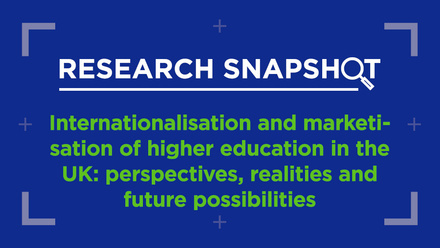5 tips for running a successful student ambassador programme

Incorporating students into your marketing activities can be a great way to be more personal in your communication, to create authentic and relevant content, and to use resources effectively when you are understaffed but still want to provide quality content and service to students. However, there are still a number of challenges when working with students. In this blog post we share some key tips we’ve learned from working with student content creators.
1. Finding the right students is key
Your programme will only be as successful as the students that are part of it. How then, do you recruit students who will help your programme stand out from the crowd? To be able to find your star students you’ll need to consider a few things:
- Package the programme in an attractive fashion. We know it’s easy to approach this at the last minute by sending out a standard e-mail to find student ambassadors. However that is not the best approach. Spend time developing a marketing plan for the programme, design an attractive advert, and make the programme prestigious and selective so that it doesn’t seem like students are doing you a favour.
- Develop a programme that students want to be part of. How do you accomplish this? See the second tip below for ideas on how to do this.
- Do you want specialists or all-arounders? Student ambassadors can be used in a number of ways, but letting them specialise so they can focus on their strengths is one way to increase the quality of their content. At the Swedish Institute we use specific teams, for example a team that focuses on YouTube so that those who are great at creating video content can spend time on what they do best. The University of Twente doesn’t focus on finding students with specific social media skills but instead finds students who are good representatives of the brand that come from specific countries or academic programmes.
2. If you build it, they will come
For your programme to be attractive, it also has to provide true value to students. We recommend investing in professional development to boost the quality of the content your ambassadors create. We have invested in everything from storytelling to photography, which not only boosts the students’ skills but also makes the programme more attractive.
We also recommend investing in team building and cultural activities. Employees improve their performance when they feel they are part of a team, so ignore team building at your own risk. Organising fun activities together, including cultural activities, helps your students understand the local culture they are promoting, it grants opportunities for content creation, and it will also make the programme more attractive to others.
Invest in professional development, team building and cultural activities to boost the quality of the content your student ambassadors create.
3. Give students ownership
How do we balance our desire for control over the quality of our content with letting students feel ownership of the content they create? All programmes are different, and while each institution should consider their own unique situation, there are some key benefits in giving students as much freedom as possible. At the Swedish Institute we co-created guidelines in our first year and have given our students creative freedom ever since. Giving students ownership often leads to increased creativity and motivation and, over time, an increase in the quality of their work. If you can’t fully trust the content your students create then you are likely spending LOTS of time on quality control and you may want to consider if you can tweak your selection process.
At the University of Twente we don’t have specific guidelines but instead make sure students understand our brand. They can decide how they want to communicate our messaging. This makes it far easier for students to come up with ideas and to let their voices be reflected in the content they create. Thanks to a strong selection process we’ve never had to intervene because ‘wrong’ content was posted.
4. Provide feedback
Giving your students creative freedom doesn’t mean they don’t need feedback. In fact, it probably means you need to spend more time giving them feedback. There are many different ways to do this but at the Swedish Institute, we’ve started scheduling individual biweekly phone calls with all our ambassadors to provide input and give feedback, as well as using Slack for quicker direct communication. The team at University of Twente is located on campus and has monthly face-to-face meetings. At the same time, they also communicate via Messenger and Facebook.
Also, try to keep in mind that feedback is not the same as micromanaging!
5. Tweak, adapt and evolve your programme
You should constantly be on the lookout for ways to improve your programme. While we do look at some key KPIs for our channels we also conduct evaluations internally and allow our student ambassadors a chance to provide input on what they think is most effective and what can be improved. Based on feedback from our ambassadors last year, both at the Swedish Institute and at the University of Twente, we ended up shutting down our Snapchat accounts and redirecting resources to YouTube and Instagram.






